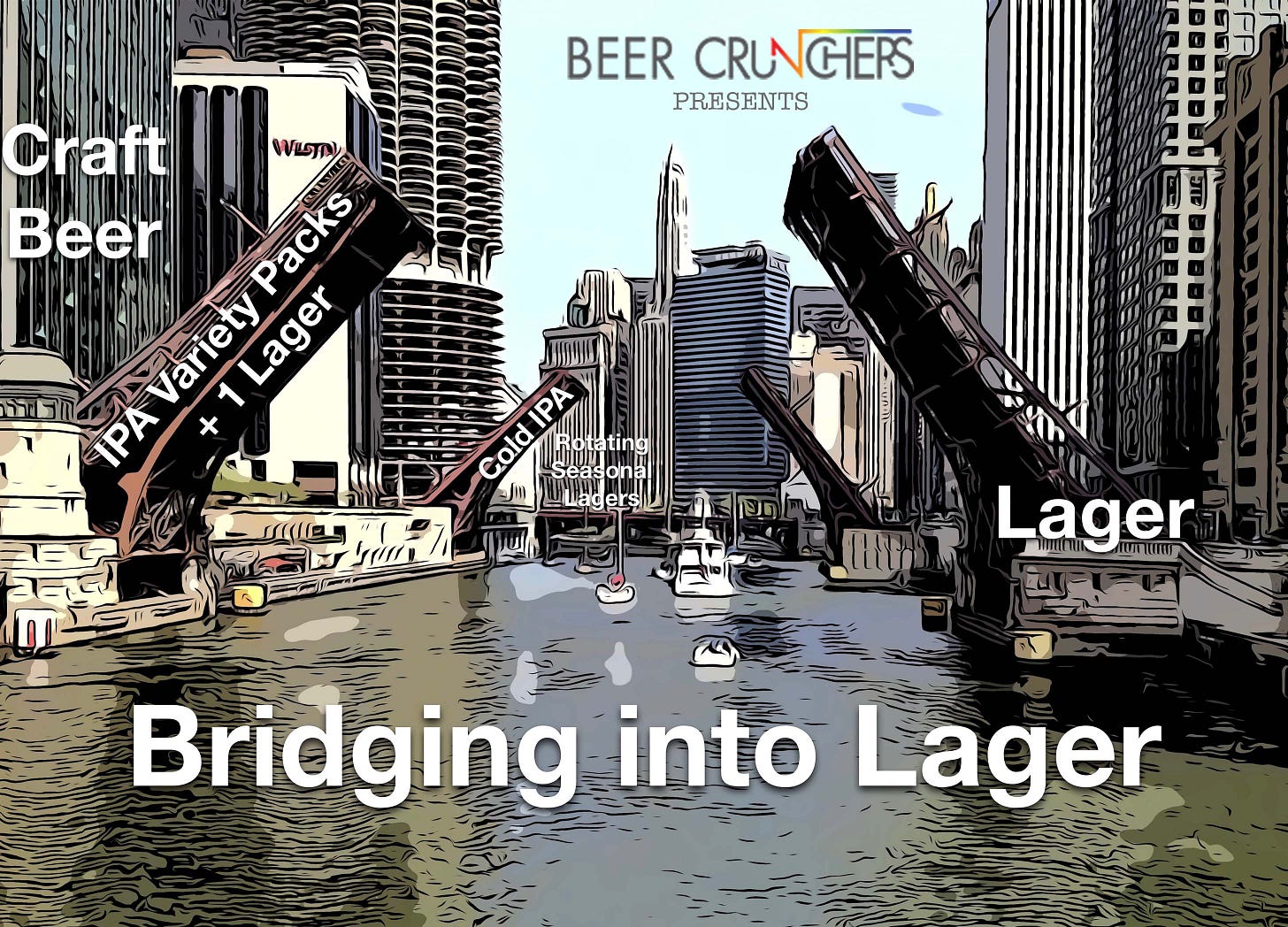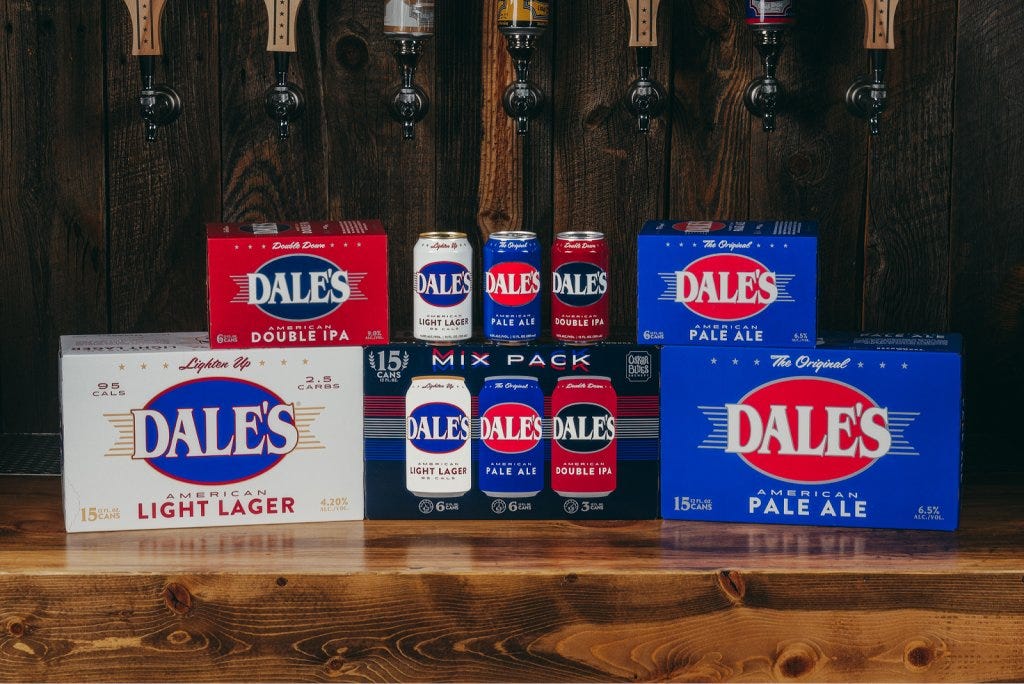Death, taxes, and craft brewers continuing to try to crack the lager nut. There’s no surer bet in this industry and perhaps no more likely path toward growth during the next positive economic cycle. GenZ may be drinking less, but their willingness to spend up for quality and support local businesses could set up well for the breweries who successfully navigate this trough in the market. In the meantime, craft brewers are continuing to build bridges for their fans into the world of lagers. The latest strategy is beginning to take place within the most significant growth category in craft: Variety Packs.
When you look back at the rise of IPAs, there’s a number of factors to credit and craft lagers have been able to capitalize on some of its tactics. For example, the constant newness of IPA had a big hand in keeping consumers engaged and loyal to a series. Craft lagers have gained significant momentum in some markets by deploying a similar strategy, leaning hard into the seasons instead of hop varieties, by rotating styles under the broad Lager umbrella that shifts with the time of year. The changing colors and flavors provides diversity, an educational curve and story-telling experiences that keeps customers in the family.
The rise of the Cold IPA provided a second bridge into Lager by creating a hybrid of the two styles. The easiest way to build something new is typically to start with your most loyal customers, so dropping a Cold IPA into an existing IPA series served as a quick way to gain some early traction. The style name would lead to a natural curiosity and educational nuggets around lagers as the term “Cold” begs a few questions. The differences between fermentation temperature of ales versus lagers, as well as the impact of a lager yeast on an otherwise IPA-like recipe, provides an added confidence to the consumer and contributes to an eventual growing interest, trials in other lager sub-styles, and loyalty.
Packing Heat
Variety Packs may be one of the best segments of craft beer right now, up $22M (7%) over the last 52 weeks, but more than half of the top 30 selling SKUs are down. As a result, breweries are continuing to shake up the brand mix and theme behind these experiential packs and a recent trend has begun to emerge of including a lager inside. For the longest time, variety packs had evolved into a variety of similar styles like variations of IPAs, but that logic appears to be breaking.
Oskar Blues has used their well known Dale’s Pale Ale brand to not only extend upwards into a Double IPA, but more recently it’s exploring completely outside of Ales into Lagers with Dale’s American Light Lager. Notice how the individual packs don’t even say Oskar Blues on the main face. The brand Dale’s appears to have transcended the brewery itself, which makes sense given it’s inclusion with CANarchy that’s now owned by Monster Energy. This has similar vibes to fellow Colorado brewer New Belgium as brand families like Voodoo Ranger and Fat Tire became so big that they’re more recognizable than the brewery itself.
Sierra Nevada has been at this “Little Thing” series for awhile now, also combining different styles under one brand family and aesthetic. Doing so allows their Party Pack to look cohesive and offer true variety of styles. In my Variety Pack post a few months ago, I wrote about the risks of this approach, particularly singling out Wild Little Thing as a potentially divisive inclusion in an otherwise hop-ward pack. It looks like that kettle sour with guava, hibiscus and strawberry is getting the boot 🥾 from the pack in favor of Crisp Little Thing which is an Easy Drinking 4.7% ABV Lager.
Like anything, there’s pros and cons to the putting a crispy boi (sorry) into a mostly otherwise IPA variety pack. Here’s what came to mind first:
Pros
Adds a short-term newness to Variety Packs, which get stale quickly and need a boost.
Brings the average liquid cost down for a SKU that constantly faces rising costs, including re-packing labor and the paperboard & aluminum waste.
Lagers have a way of vanishing quickly, so 3 of the 12 cans being light makes consumers naturally drink through the pack faster before they’re ready for reinforcements.
This strategy could help to debut and sample out a new lager that has much bigger aspirations beyond the variety pack, but allowing it to start small and grow organically.
Cons
Having one component of a variety pack require fermenting longer than the other beers in the pack makes scheduling and timing their readiness extra complicated on the production side. Nothing that can’t be dealt with as we’re doing it at Rev right now with Subz-Hero (Cold IPA) in our IPA variety pack, but it’s far from ideal.
Consumers buying based on on IPA exclusivity or ABV value may consider this lager addition to be a detractor which leads them to choosing a competitor’s all IPA pack instead.
Unlike the Dale’s and Sierra Nevada example, many breweries don’t line up the branding of their lager with their IPAs, giving each their own visual identity. As a result, trying to mix and match these in a pack can cause the brands to not line up well nor follow a theme.
Here’s a few other related examples I saw recently:



Lagering Patience
For pessimists, it’s impossible to see the next cycle of growth for craft brewers while they’re so fixated on the endlessly long tail of small craft breweries, today’s shaky economic conditions, and trends toward NA & flavored malt beverages. I on the other hand can’t stop thinking about the massive slug of macro lager drinkers out there who continue to be turned off by the marketing efforts of global breweries who continue to trip up. Like every marketplace, even something like Bitcoin, growth takes place fast and in cycles fueled by new accelerants. The most recent cycle was driven by IPA. Is craft beer patiently laying the ground work to disrupt the overall lager category some day?
If you enjoyed this post, you may like the following related posts. Please considering supporting my work by subscribing below:









Great read as always, Doug! As a consumer, I've never considered the timing implications of packaging a lager with a handful of ales. Fascinating.